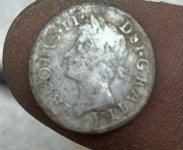tbarnstormer
Newbie
- Feb 21, 2009
- 2
- 0
I purchased, for a specific purpose, a White's TM-808. Unfortunately, its a good thing I knew the approximate area to dig, cause it turns out I had no idea what I was doing with the detector.
So, two questions;
1) do I dump the TM-808 or try to learn how to use it?
2) the articles I was looking for were coins, embedded in wax, then in glass, then in one case in rubber, the other in concrete. Even if I had known what I was doing, would I have been able to find anything? One was about 4 feet down, the other about 2 feet.
My gut tells me to try and dump the thing for whatever I can get, but, there's always that doubt, and I did kind of enjoy myself, so, I ask those who are in a position to know to provide some advice.
Thanks,
So, two questions;
1) do I dump the TM-808 or try to learn how to use it?
2) the articles I was looking for were coins, embedded in wax, then in glass, then in one case in rubber, the other in concrete. Even if I had known what I was doing, would I have been able to find anything? One was about 4 feet down, the other about 2 feet.
My gut tells me to try and dump the thing for whatever I can get, but, there's always that doubt, and I did kind of enjoy myself, so, I ask those who are in a position to know to provide some advice.
Thanks,
Upvote
0






